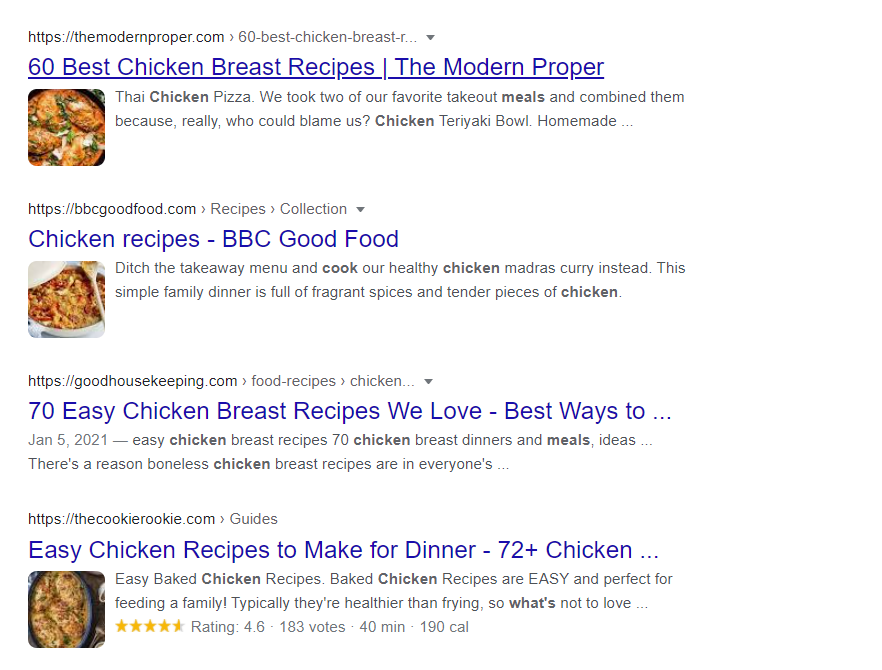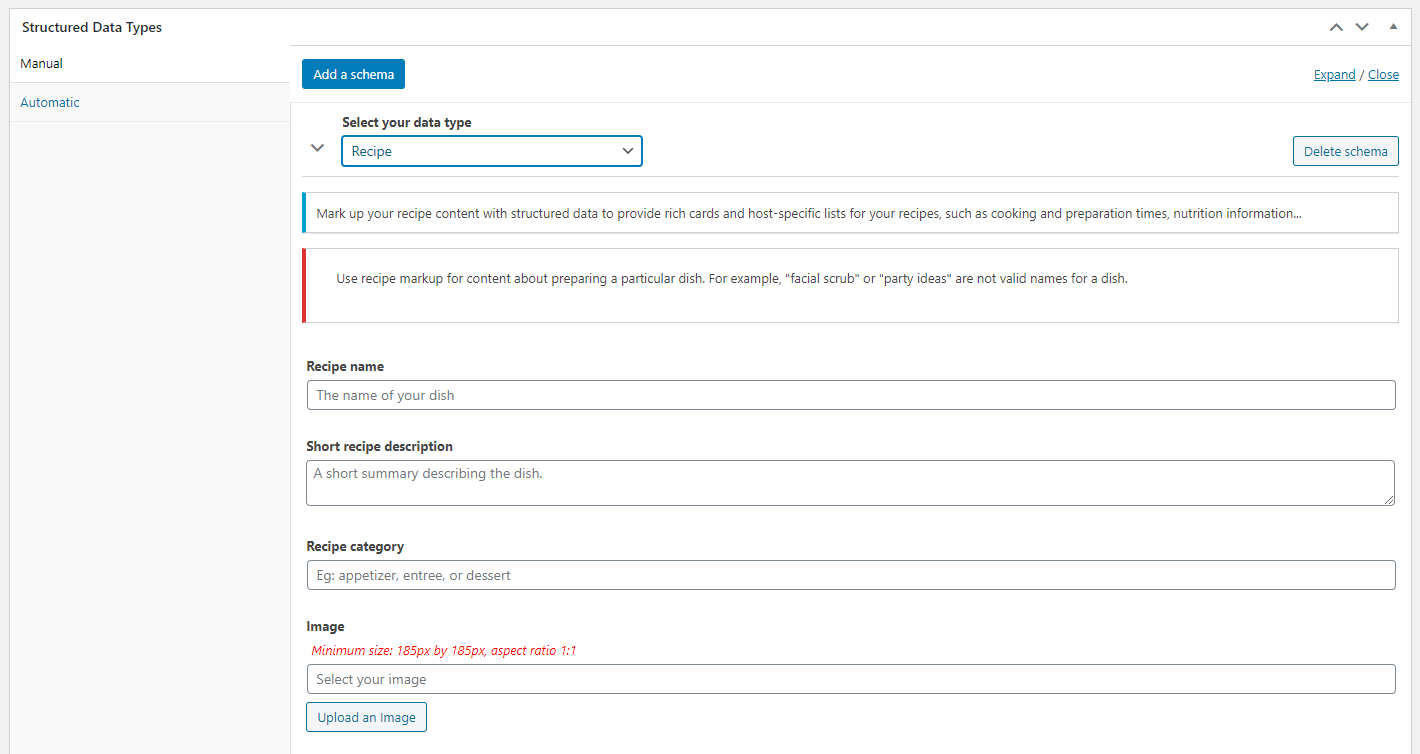Do you already have a food blog or are you thinking of starting one on WordPress?
Using WordPress is already a great idea because it is an easy solution to create and publish websites. Once you have your site and theme set up, you can dedicate your time to producing original content and attracting visitors. No coding required. Recipes are probably going to be a big part of that content because they are a very popular search subject throughout the world.
Download the Ebook – Master Google Structured Data Types (schemas)
Some successful food blogs make money from sponsorship or affiliate marketing. Some food bloggers have used a successful site as a springboard to become the successful cookbook authors or appear on TV shows.
If you want that type of success, an important ingredient will be visibility in Google and schema will help that enormously.
Good reasons to use the Recipe schema
Schema is structured data that you add to your web page to describe the page’s content to search engines. Unless you are using a recipe plugin or a theme that adds schema for you, normal WordPress posts do not contain this markup. You will have to add it yourself.
Adding Recipe schema can give a page extra listing features in the search results such as a thumbnail image and star ratings. These attract the eye and increase the chances of getting traffic from search results. Pages without Recipe schema markup can appear very uninviting in results shown for recipe searches.

Google also has a lot of other features that give visibility to recipes. The Recipes carousel is shown very often for popular recipe searches and pages must use the Recipe schema to benefit from this extra visibility.

Using schema to indicate the number of calories, cooking time, preparation time and ingredients also help Google find pages that correspond to searches concerning these subjects.

Without cooking times indicated in structured data, Google would be unable to find these recipes and they would not feature in these search results.
What type of posts for recipes?
Recipes can be published in regular WordPress pages or posts without any specific theme or plugin. Publishing recipes as blog posts with a publication date and an author is a popular method for a lot of cooking blogs. A lot of recipes turn into long articles including the origin of the recipe, cooking technique, ideas on variations and lots and lots of photos. The ingredients and instructions can be hard to find sometimes, but writing long articles is a SEO tactic that works because Google loves content.
You can use tags and categories to organize recipes published as posts. However, if you want to separate news articles and recipes blog posts, you may want to add a custom post type and recipe specific taxonomies to WordPress. This can also help you obtain specific and consistent formatting for recipe posts.
Some WordPress themes are designed specifically for cooking blogs and already have this custom post type.
How to add Recipe schema to any post with SEOPress
You can add schema directly to any page or post in WordPress using SEOPress’ Structured Data Types metabox. Simply choose Recipe from Select your data type and start filling out the data fields such as Recipe name, Short recipe description, Recipe category, Preparation time , etc.

Add ingredients as a list with an ingredient per line. You can include measurements and quantities in this list. For example:
- 500g flour
- 1 egg
- 50g butter
- 400ml buttermilk
- 3 tablespoons sugar
- 1 teaspoon baking soda
- 1 teaspoon salt
(Guesses for what this list of ingredients makes in the comments section below).
If you want to make sure that Google understands ingredients you should keep the list as simple as possible.
A general rule for any structured data, the text you enter here should be the same as content visible on the actual page. If you want to indicate the number of calories your recipe contains in the metabox, for example, make sure that you also mention this same number of calories in the post.
It is very important to provide a thumbnail image for your recipe as this is an important feature for recipes in rich snippets. Use a square image with at least 185 x 185 pixels. But bigger is better.
How to set up an automatic Recipe Schema
If you have a recipe custom post type, you can automatically associate it with the Recipe schema using SEOPress’ automatic schema. To create an automatic recipe schema, go to SEO > Schemas and click on the Add schema button.
Choose, Recipes from Select your data type, and then select your post type from the list just below.
You can autocomplete certain fields with values from the post type. For example, the Recipe name could simply be taken from the value Post title. Click on Publish to save the automatic schema.
Once this is done, you will see values added automatically to the Structured Data Types metabox in recipe posts and you can complete any empty fields manually. Setting up automatic schema will gain you a lot of time.
Check your schema and you are finished
When you have published your article with the Recipe schema, you can check that everything is OK using Google’s Rich Results Test tool. Cut and paste the URL of your page and click Test URL to run the test. You should see Recipe in the list of Detected Items with a green tick. There may be warnings about missing optional values. You can click on the item to see these and also see the values that Google found on your page.
If that tested out OK, well done! You can do this for every recipe you publish or follow errors and warnings in Google’s Search Console Rich Results Status Report. This will also report on the number of impressions your rich results obtained in Google over time.
Your recipes should be more visible and your blog getting more traffic!



